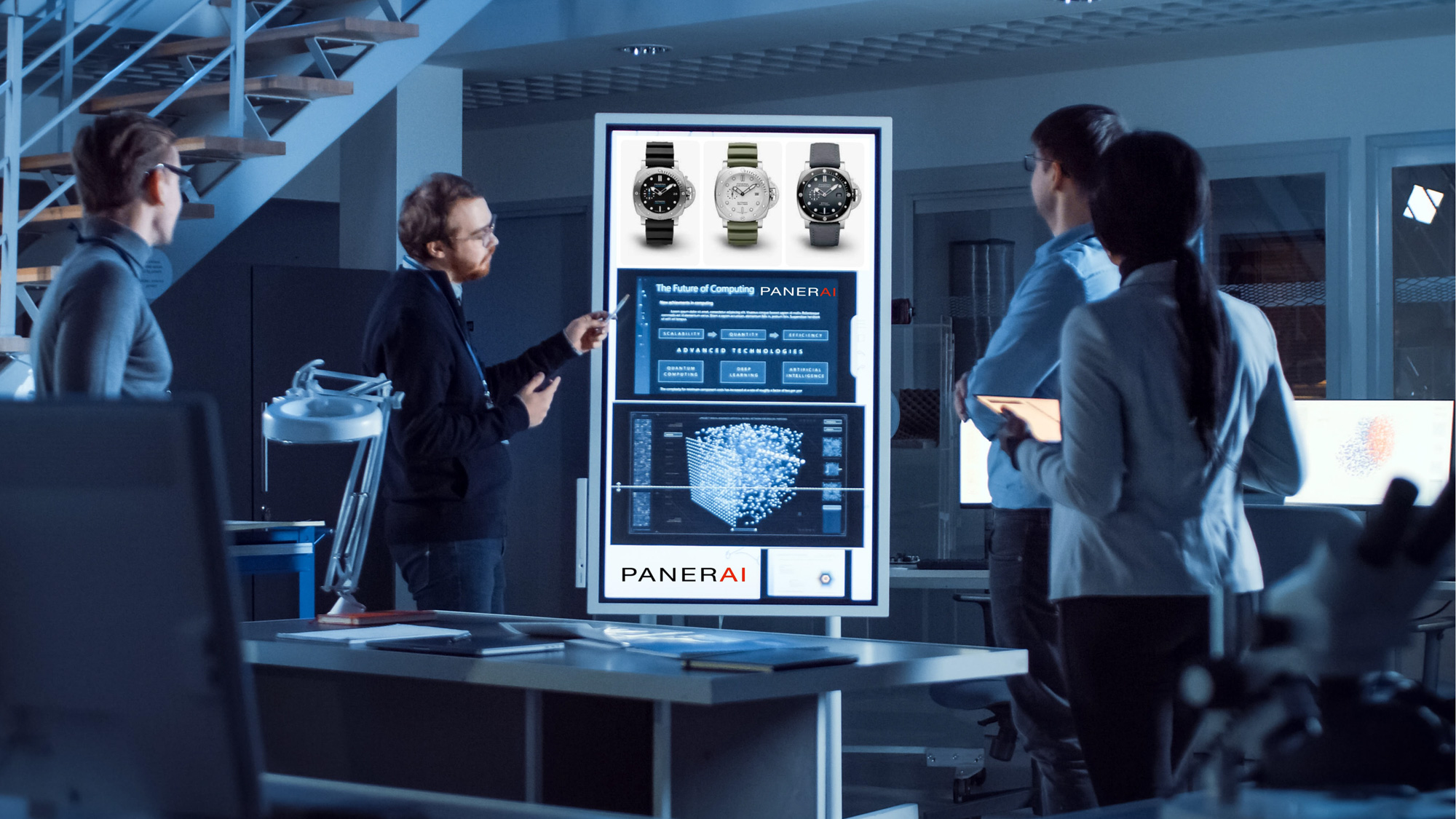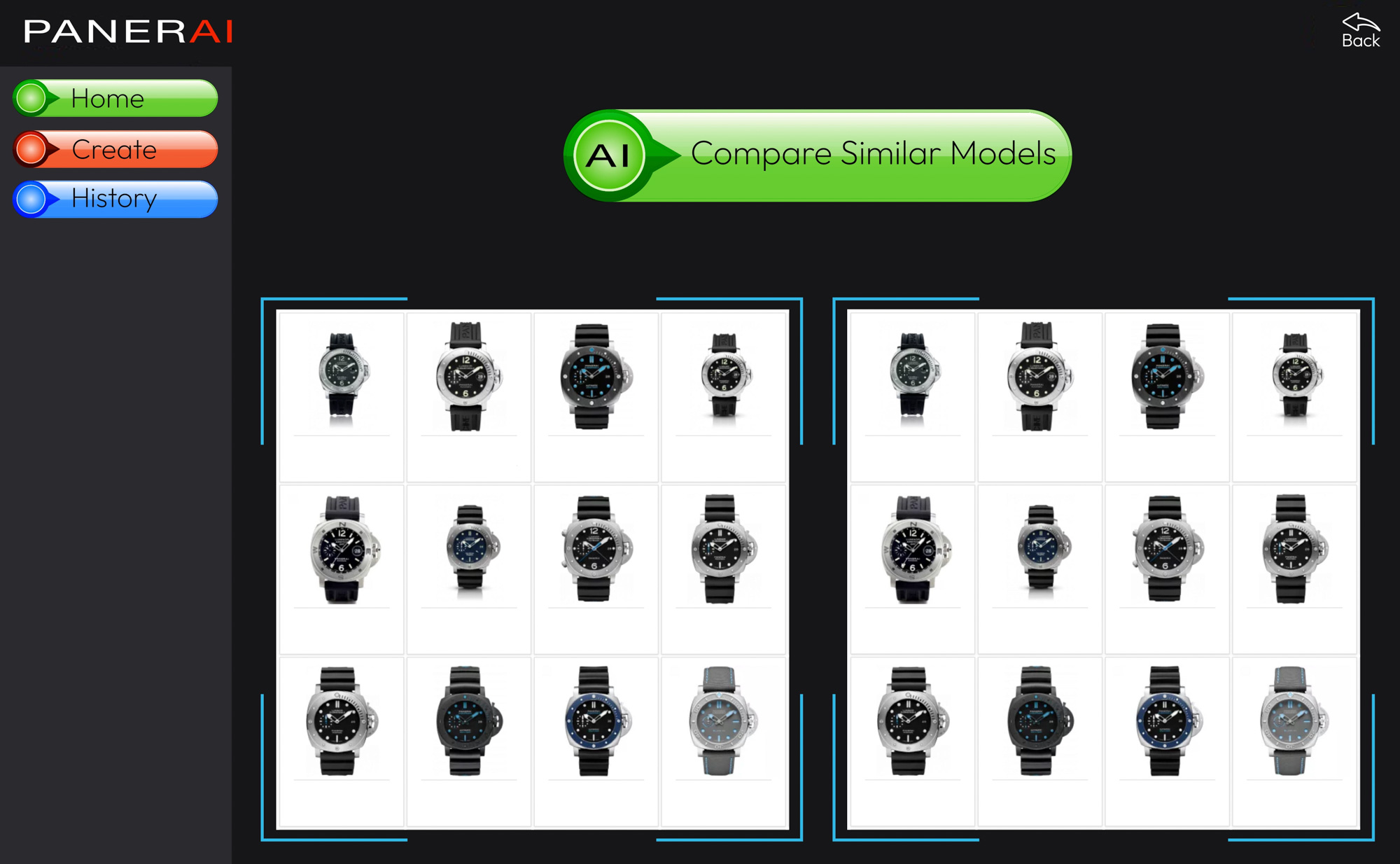 [DISCLAIMER PUBLISHED LATER: After the publication of this April Fool’s Day article the Richemont Group – the parent company of Panerai – communicated that they have a “No AI policy” at the organization. Out of caution for that policy, the Richemont Group wanted to make sure that readers of this satirical article did not develop any misunderstandings.]
[DISCLAIMER PUBLISHED LATER: After the publication of this April Fool’s Day article the Richemont Group – the parent company of Panerai – communicated that they have a “No AI policy” at the organization. Out of caution for that policy, the Richemont Group wanted to make sure that readers of this satirical article did not develop any misunderstandings.]
“It was really quite funny if you think about it,” says Alessandro Ficarelli, Panerai Product Development Director. “My team was very excited about a new watch they developed, but when we started showing it to retailers we hit a snag. Apparently, a previous Panerai development team released more or less the same watch about 12 years ago. We totally missed this, and it is an interesting example of Panerai developing the same product — twice! I guess it was that good we came up with the idea again. This was a problem, however, and we didn’t want to run into it again.” So begins the interesting tale of how Swiss-Italian watchmaker Panerai started to leverage contemporary technology to assist the brand in the age-old task of designing watch cases and dials.
“The first thing we realized when we wanted to determine a solution to this problem,” Ficarelli added, “was that no one person in the company really had detailed knowledge about all the Panerai watches that have ever been released. Vintage Panerai experts tend to focus on mostly older models and today’s product development teams don’t always have records of all the watch models we have produced by the teams who existed before them. The basic challenge to start with was to create an intelligent database of all the Panerai watches that have been developed until now. The purpose of this system would be to cross-reference proposed designs with existing designs, in order to ensure that no one accidentally recreates an existing product. I am very proud to say that using innovative technology, Panerai was able to create a very powerful solution.”
The problem detailed by Mr. Ficarelli is not unique to Panerai. There are many watch companies today whose primary theme is to maintain a certain design legacy and brand DNA. To do this, they are not necessarily able to produce entirely novel designs but must rather create new things that nevertheless feel as though they exist in a consolidated body of work. From a design perspective, this is both an artistic and technical challenge. Can technology and artificial intelligence (AI) software come to the rescue of these historic names in watchmaking?
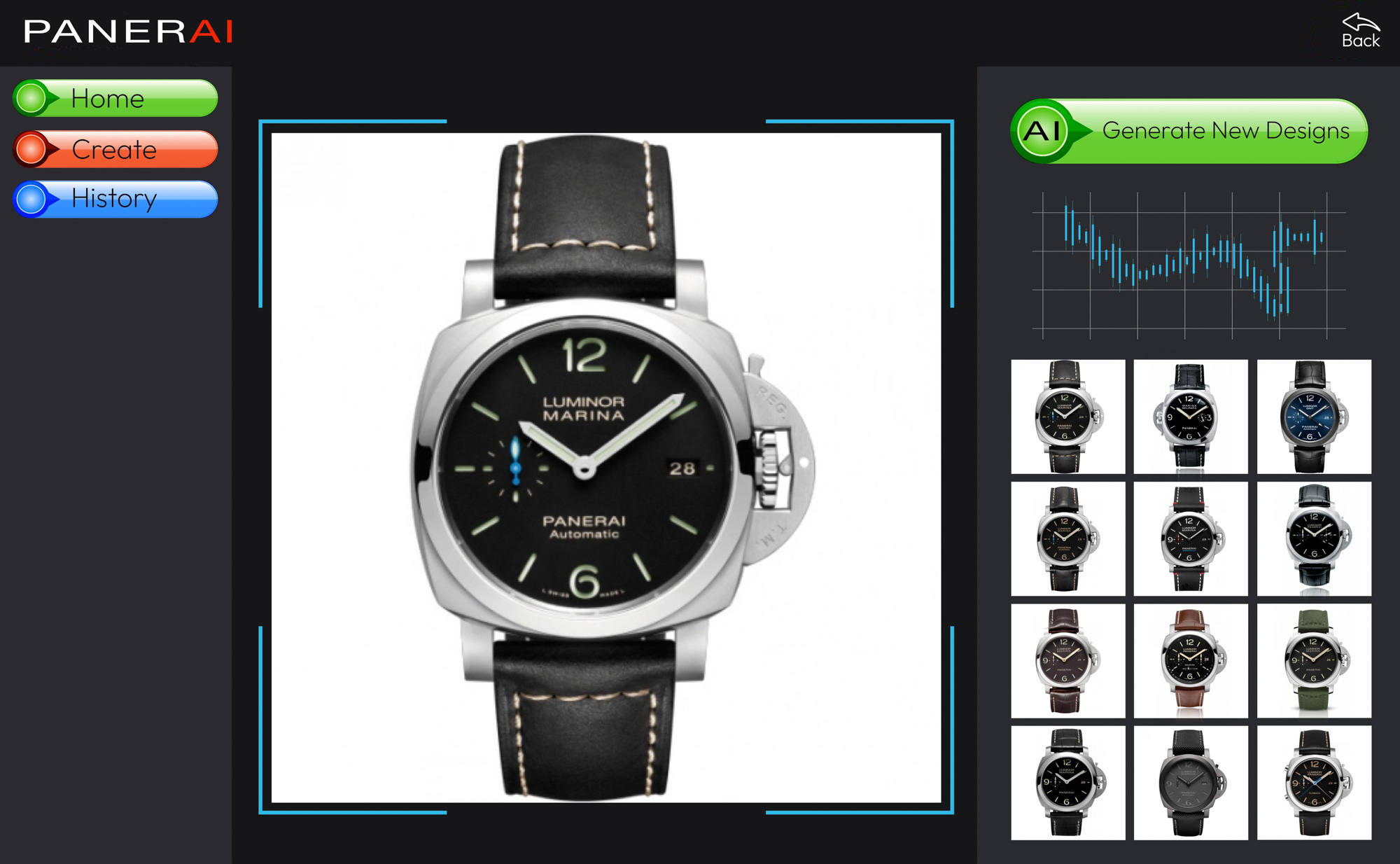
For Panerai, the answer is yes. Even though the implications of these decisions are likely to be controversial in the watch industry space (little novelty is immediately welcomed with open arms), the Panerai team has very enthusiastically embraced the newest member of the team, a software system it refers to as “PanerAI.” PanerAI began as a “smart database” for all of the Panerai watch models ever produced. The project began through an intensive cataloging process that, unfortunately, could not be automated. The Panerai team uploaded as many records as they could — including photography and concept art — of all the information in the brand’s archives. Traditional database architecture is only as good as its indexing system, which means that the way Panerai puts information in the database determines how effective the database is. On a basic level, it would be difficult to use a traditional database to cross-reference visual designs. The situation is very different today with the emergence and wide availability of software that can learn, which we currently often refer to as AI. Learning software trains itself to see similarities and patterns in the data it collects. When applied to a watch brand, the software is not only able to have a visual understanding of everything the brand has done but is also able to suggest where a brand might go.
The reason why PanerAI is so important is because the Panerai team quickly learned an important truth about modern AI software — that it is able to ask questions as well as it is able to answer them. Answering questions includes queries like, “Did we make a watch like this before?” Asking questions can include things such as “What if we made a new watch for today?” Ficarelli explains: “We were shocked when one of our designers suggested we query PanerAI to suggest what Panerai watch will people want to wear next year. It was almost done as a joke. We laughed while typing our suggestion into the system. A moment later, everyone stopped speaking almost immediately as, together, we looked at the screen. In about five seconds, PanerAI came up with a list of various design proposals that a traditional product team would take several months to come up with. We even joked about how PanerAI probably did it better. Later, I started to think about it and realized that I wasn’t joking. Could we use AI to come up with new watch designs? The question was so bold it was almost rude to ask. And yet, why not, exactly?”
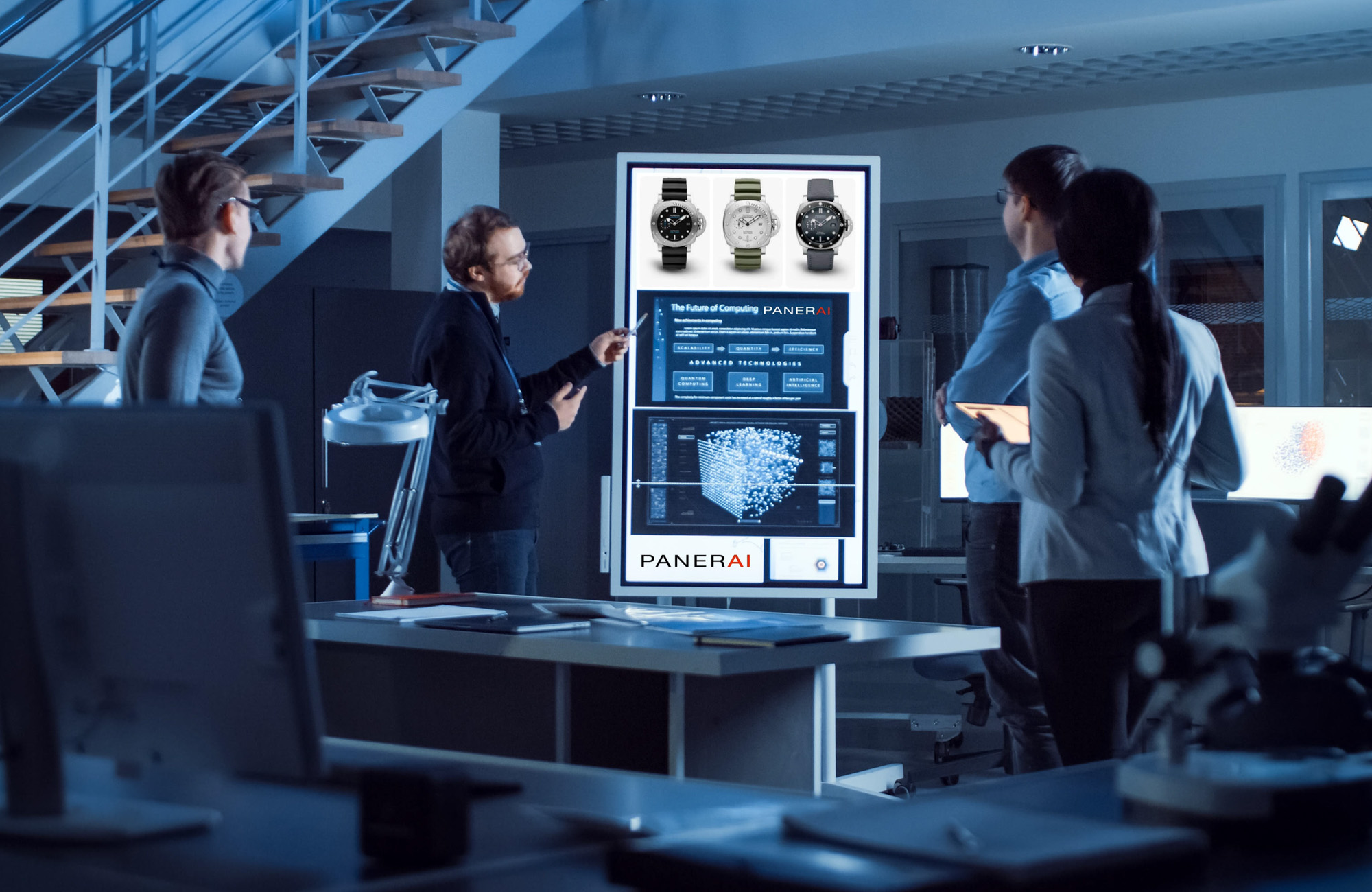
Panerai will not disclose which watches it releases that are designed by AI or traditional human designers. “We think it is enough to share the important news that we developed PanerAI and how our design teams can use it for inspiration or advice. We don’t want to advertise luxury watches that were designed by software, and we want to make sure we preserve the important heritage and craftsmanship of human watch design practices. That said, such as we employed PanerAI to ensure Panerai products are as innovative as possible, we will not back down from being a modern company that uses all tools available. There was pushback when machines started to make watch parts. Watchmakers were told that in a few years, their services would not be necessary. That did not materialize and today we have humans and machines working side-by-side to produce timepieces. PanerAI is merely the latest innovation to help humans. At the end of the day, humans still assemble Panerai watches, and more importantly, humans are still needed to buy and wear them. We do not think that PanerAI or any artificial intelligence system poses a serious threat to the necessarily organic nature of timekeeping and luxury watch design.”
Not everyone is as convinced. Opinions about AI image generation tools in the creative space are mixed, with many people concerned about any interference to otherwise human jobs. In the watch industry, the preservation of traditional craftsmanship is a core value of the industry, and yet the march of progress must go on. News of PanerAI resulted in a lot of the expected reactionary shock and appeal to popular opinion (which tends to be anti-software when compared with humans). Without specifically critiquing Panerai’s strategy, some luxury watch brand managers professed an undying dedication to employing humans for watch design and assembly. The tenor is similar to the tone of watch brands that professed an undying dedication to mechanical watch production during the “quartz crisis” of the 1970s and 1980s, as well as voices from many watch brand professionals around 2014 when the Apple Watch was announced and the threat of smartwatches solidified. What quartz and smartwatches both did was increase the size of the wristwatch market. Some traditional brands lost market share, indeed, but with the advent of each new revolutionary step in wristwatch technology, the market for consumers of these devices increased. Could artificial intelligence-assisted (or even entirely powered) image generation software be the future of answering the question, “What watch should we build next?”
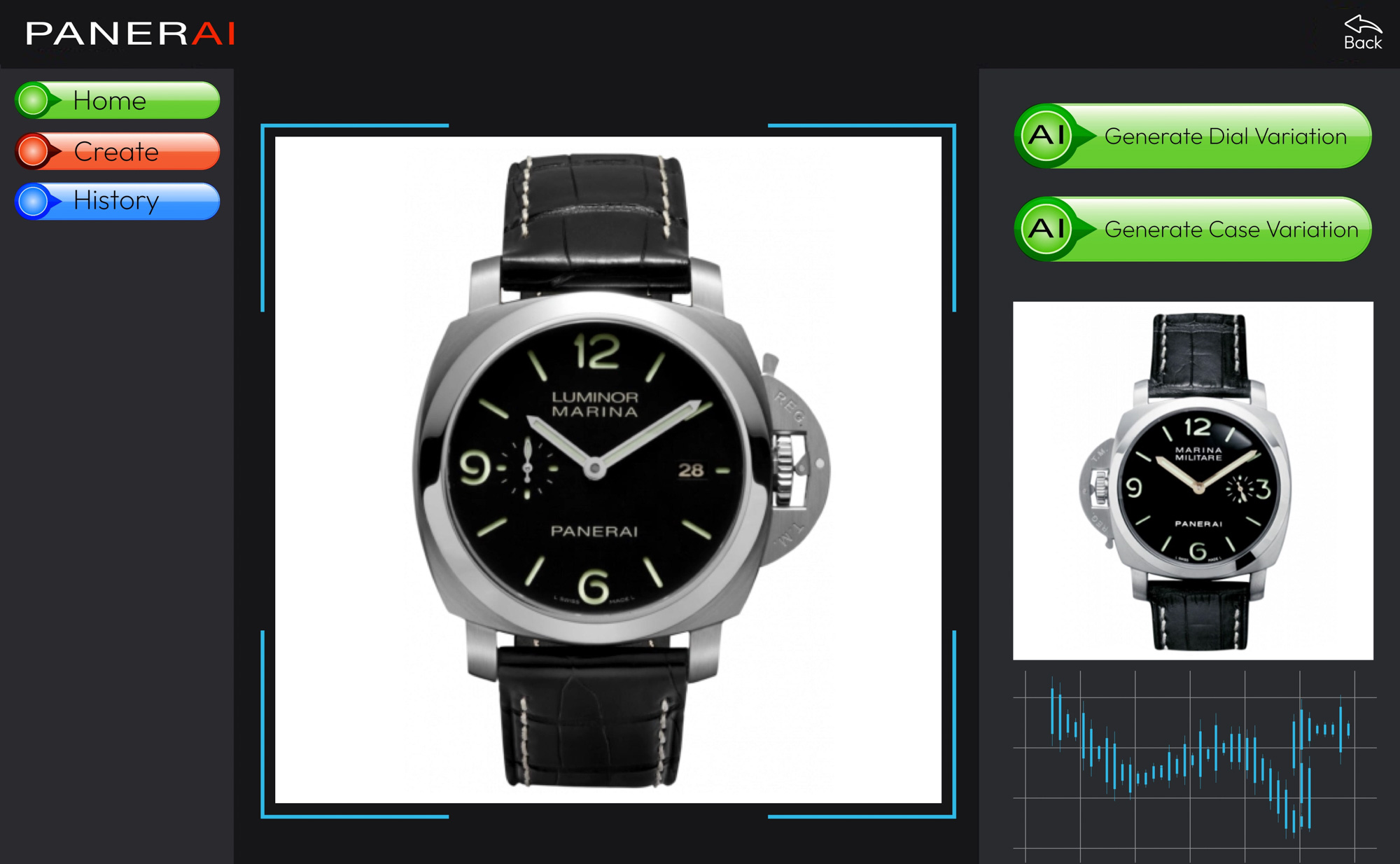
Panerai is probably the biggest name in traditional watchmaking to embrace AI graphics technology, but it certainly isn’t the first or the last. Panerai’s approach is interesting because it did not begin with the desire to outsource design but rather to protect the integrity of design originality and the experience for Panerai consumers. Only after they built a tool for that purpose, did they accidentally discover that their tool for always making sure they come up with original designs can also help them come up with novel designs which have never existed before.
As Panerai’s Alessandro Ficarelli reminds us, it is important to preserve the role of the people in the watch design process. For that reason, Panerai will not communicate exactly how it uses PanerAI for commercial products. There will always be a hands-on element, and mature humans will always approve any timepiece that goes into production. Panerai’s creative team can now focus less on coming up with something novel and can instead focus on working with AI-validated original design directions and concepts. The implications for the watch industry are profound. The ultimate deciding factor will be just how well human buyers react to AI-designed luxury items.
[DISCLAIMER PUBLISHED LATER: After the publication of this April Fool’s Day article the Richemont Group – the parent company of Panerai – communicated that they have a “No AI policy” at the organization. Out of caution for that policy, the Richemont Group wanted to make sure that readers of this satirical article did not develop any misunderstandings.]

